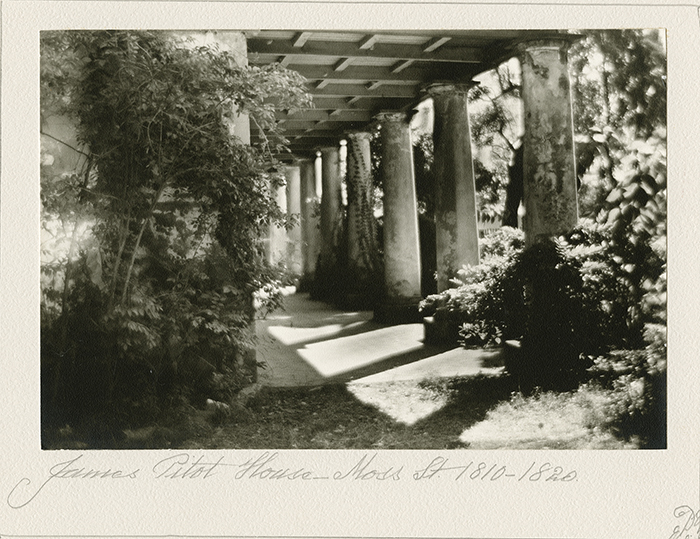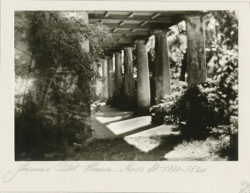Eugene Delcroix
New Orleans photographer Eugene Delcroix's work ranges from studio portraiture to scenes of murky cypress swamps and French Quarter ironwork.

Courtesy of The Historic New Orleans Collection
Old Pitot House on Moss Street. Delacroix, Eugene (Photographer)
Eugene Delcroix, best known for photographs of soft focus and indistinct details, could practice straight (that is, unmanipulated) photography with the best of his peers. In a career that began in the 1910s and lasted into the 1960s, Delcroix’s photography ranged from studio portraiture to scenes of murky cypress swamps, and from high school yearbook photographs to French Quarter ironwork. Born in the Carrollton section of New Orleans in 1891, Delcroix also spent some of his childhood on Grand Isle, Louisiana, where his mother was a schoolteacher. Numerous scenes on and near this southernmost portion of Jefferson Parish are extant in his archive. Before establishing his own photo studio beginning in the 1930s, Delcroix had worked in two prominent portrait studios in New Orleans, one operated by Anthony H. Hitchler and the other by C. Bennette Moore.
Delcroix’s straightforward documentary photographs were often showcased in the Jefferson Parish Annual Review, beginning with the start-up of that publication in the mid-1930s and continuing for three decades. Nonetheless, Delcroix’s artistic legacy is as a late-generation pictorialist. This type of photography, in which the actual subject is of less importance than the artistic vision of the photographer, was falling out of fashion in the 1920s and 1930s as it was challenged by various aspects of modernism in photography, including Group f/64, group of seven twentieth-century San Francisco photographers who shared a common photographic style characterized by sharp focus and rigorous compositional structure. Yet for Delcroix, gauzy and heavily retouched portraits and timeless scenes of south Louisiana landscapes and architecture defined and popularized his work both during his lifetime and since his death.
Delcroix’s photographs of New Orleans and Louisiana subjects, usually printed and framed small enough to be tucked in a suitcase, were immensely popular souvenirs for those visiting the Crescent City. In 1938, he published Patios, Stairways, and Iron Lace Balconies of Old New Orleans, reprinted several times over the following decade. Delacroix remained a steadfast user of glass plates long after film had become the preferred medium for professional photographers. His approach to making photographs often eradicated any temporal references, making his work hard to date unless a certain image can be cross-referenced with a publication date. The limited geographic range of his subjects and his revisiting of these same places over the course of his career also makes precise dating difficult.
Photographs by Delcroix were exhibited in the United States and abroad, receiving awards and prizes. He was an active member and president of the Orleans Camera Club, often serving as a judge for its competitions. In 1953, the group dedicated its annual exhibition to Delcroix. He lectured publicly and conducted workshops on aspects of photographic practice and picture-making. He died in New Orleans in 1967.
The Eugene Delcroix archive is housed in two New Orleans museums. His prints are held by the New Orleans Museum of Art. The negatives are housed at The Historic New Orleans Collection.
